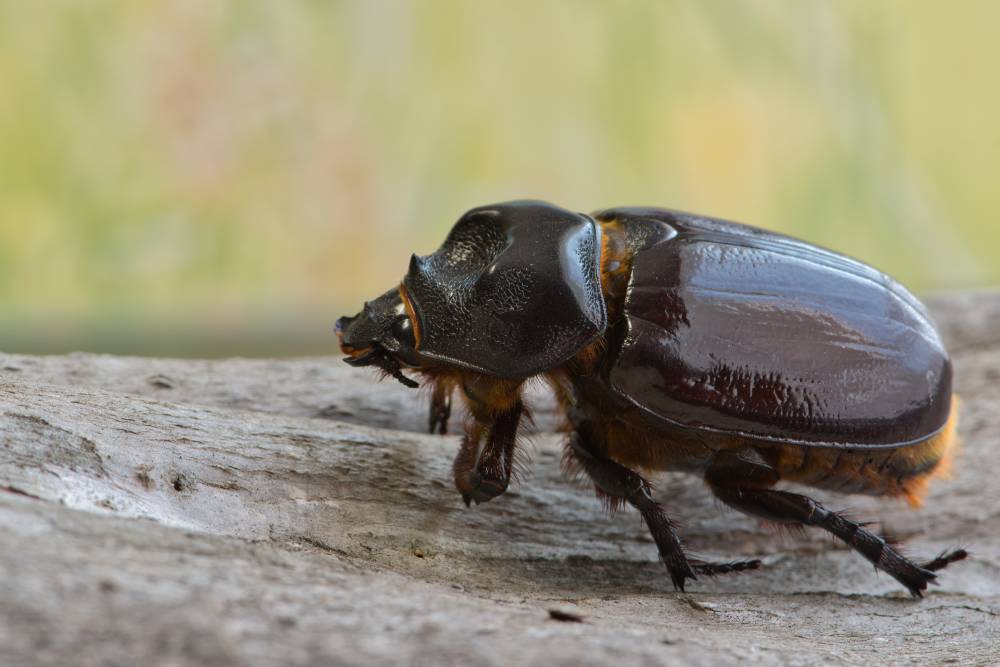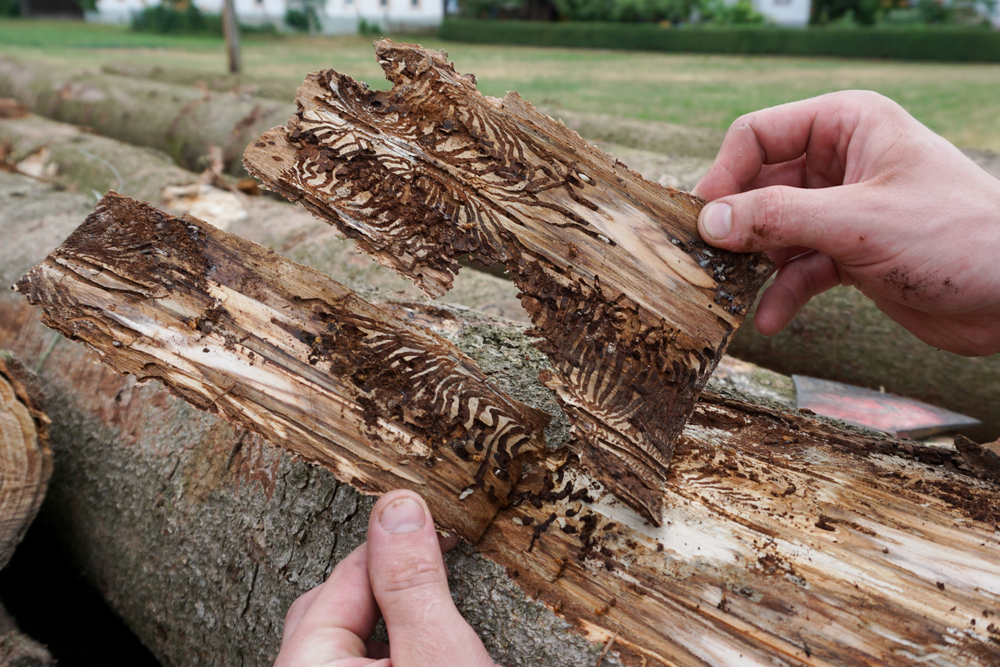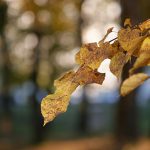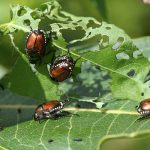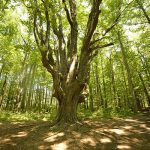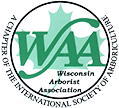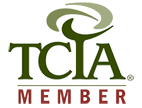We are back with a new edition of our series on the common tree diseases and insect pests in the Chicago area as we discuss a group of pests that causes problems throughout the U.S.; bark beetles. There are around 6,000 species of bark beetles worldwide under the subfamily Scolytinae and there are 600 that are found in the U.S. and Canada. Many invasive species of bark beetles have been found in the U.S. and in some areas, like California, they have killed trees over millions of acres.
Bark beetles are seen as beneficial to an ecosystem because they typically attack trees that are dead or dying and speed up their decomposition. However, since 2000, bark beetles have grown significantly in number and have spread throughout the U.S. from New Mexico to British Columbia and from California to Long Island. It is widely believed that global warming has had an impact on bark beetle populations as warmer temperatures and shorter winters are not as effective at killing off beetle larvae. As a result, more bark beetles are surviving the winter, reproducing earlier and more frequently, and spreading over larger areas. They are also attacking healthy trees instead of sticking to dead and dying trees.
Most species of bark beetles are small insects that almost resemble a coffee bean in shape and color and they only grow to be about 5 millimeters in length. They have cylindrical shaped bodies and tend to be black, brown, or dark red in color. Their strong mandibles allow them to chew through bark and phloem (inner bark) where they lay their eggs. When the larvae hatch, they feed on the surrounding phloem and bore galleries in the wood. This can damage and kill the branches and lead to a decline of the tree, though it is unlikely for most species of bark beetles to completely kill a tree on its own. The other danger with bark beetles is that certain species, like the elm bark beetle, can transmit dangerous fungi to the tree which causes serious diseases like Dutch elm disease.
It is difficult to treat trees affected by bark beetles because their habitat in the inner bark keeps them protected from insecticides. The best thing you can do is protect your trees to prevent bark beetle infestations in the first place. At Hendricksen Tree Care, we can help protect your trees from bark beetles and other destructive pests with effective tree maintenance and preventative treatments. Our tree maintenance services include fertilizer applications to help make your trees strong and resistant and we also use insecticides that can be sprayed or injected to treat affected trees. If you believe your trees are affected by bark beetles, you need to call our professionals right away to assess the situation and come up with an appropriate solution.
Life Cycle of Bark Beetles
The life cycle of most species of bark beetles starts when the female lays eggs underneath the outer bark. These white colored eggs are small and oval-shaped, and the larvae that hatch look like typical grubs with white segmented bodies and dark brown heads. As the female bark beetle lays its eggs, it also disperses a fungus that makes the surrounding tissue edible for the larvae when they hatch.
The larvae feed on the surrounding tissue in the phloem and create galleries in the wood. These galleries can be seen if you peel back the outer layer of bark. They will then pupate in an enlarged chamber that they bore at the end of the galleries. After the pupation stage, they will chew a hole in the bark and emerge as adults. Newly emerged adults will either stay on the same tree to reproduce or leave to reproduce on a different tree. Bark beetles usually have one or two generations each year but may have more if the temperature stays warmer longer.
Female bark beetles will release a chemical when it finds a favorable tree which will attract hundreds of other beetles to come and attack the tree. They tend to only breed in one part of the tree, such as a specific branch or twig, but a large infestation can affect more of the tree. As more bark beetles disperse their fungus into the sapwood and their larvae feed on the phloem, this can result in major damage to the tree.
Signs of a Bark Beetle Infestation
Bark beetles attack the outer and inner bark in the trunk, branches, or twigs on a tree. The outer bark in the affected areas may become loose due to the activity of bark beetles and when the bark is peeled away, the exit holes and galleries are revealed. The following are all the signs that indicate a bark beetle infestation:
- Sap/ pitch: Affected trees naturally defend themselves from bark beetles by releasing their sap, or pitch. The sap will appear as reddish-brown or white blobs on the bark of the tree. If the tree successfully fought off the bark beetles, it will appear white. If the beetles were successful in invading the tree, the sap will still be reddish-brown in color.
- Frass: Frass is a substance similar to sawdust that is created when bark beetles bore into the bark. It is reddish-brown in color and can be seen within the crevices of the bark and on the ground surrounding the tree.
- Bark flaking: Flaking of the bark is typically caused by woodpeckers looking for bark beetles. This could be a sign of their presence.
- Weak outer bark: The boring through the bark and into the phloem can cause the bark to become loose and easily peel away.
- Galleries: Peeling away the outer bark will reveal galleries in the inner bark created by the bark beetle larvae. These galleries typically appear as small tunnels that radiate out from a central location.
- Exit holes: There are also exit holes in the inner bark caused by the emergence of adult bark beetles.
- Discolored foliage: The foliage of affected trees will become discolored as the bark beetles cause more damage to the twigs and branches. The discoloration generally starts at the top of the tree and works its way down. On conifer trees, the needles will turn reddish-brown in color and on deciduous trees, the leaves may yellow. If an affected elm tree has yellowing or wilted leaves, there is a good chance it contracted Dutch elm disease from the bark beetles.
Species of Bark Beetles
As we mentioned above, there are around 6,000 species of bark beetles, 600 of which can be found in the U.S. and Canada. The following are some of the most common species of bark beetles found in the Chicago area and other areas of the U.S.:
- Cedar and cypress bark beetles: Cedar and cypress bark beetles (Phloeosinus sp) are primarily found in the western U.S. and they attack cypress trees, junipers, and redwoods. Their larvae leave galleries shaped like centipedes and the adults feed on the twigs of a tree after they emerge.
- Elm bark beetles: Elm bark beetles (Scolytus multistriatus) are the main vector of Dutch elm disease. They can be found throughout the U.S. including the Chicago area.
- Oak ambrosia and oak bark beetles: Oak ambrosia beetles (Monarthrum sp) and oak bark beetles (Pseudopityophthorus sp) can be found in the Chicago area and they attack various types of oak trees. Their galleries are easy to identify as there is one large central tunnel with many smaller tunnels extending from either side.
- Shothole borer: The shothole borer (Scolytus rugulosus) mainly attacks fruit trees, hawthorns and other woody trees and they leave gummy spots on affected trees. They can also be found in the Chicago area.
- Twig beetles: Twig beetles (Pityophthorus) attack shoots and twigs on pine and walnut trees and they are also known to spread various canker diseases to the affected trees. This is another bark beetle species that may be found in the Chicago area.
- Engraver beetles: Engraver beetles (Ips sp) primarily attack pine trees and create wishbone-shaped tunnels. They are mostly found in the southern U.S.
- Mountain pine beetle: Mountain pine beetles (Dendroctonus ponderosae) attack pine trees including lodgepoles and sugar pines in forested areas of the Rocky Mountain region. They attack the middle of the trunk of large trees and create J-shaped galleries under the bark.
- Red turpentine beetles: Red turpentine beetles (Dendroctonus valens) are reddish colored pine beetles that sometimes also attack non-pines like spruces and white firs. These beetles usually attack the lowest part of the trunk and the roots.
- Western pine beetle: Western pine beetles (Dendroctonus brevicomis) are found in the western U.S. and they attack coulter and ponderosa pine trees. These beetles start mid-trunk and move up and down the tree.
Bark Beetle Impact
Bark beetles tend to target trees that are dead or dying, but a large growth in the bark beetle population has resulted in them spreading over larger areas and attacking healthy trees as well. It is largely believed that warmer weather and shorter winters caused by climate change are the cause of the growth and spread of bark beetle populations.
In the western U.S., warmer temperatures are not causing beetle larvae to die off in the winter which is increasing their population. The warmer weather also lasts longer and allows bark beetles to reproduce more than 2 generations per year in many areas. Their increase in numbers is also causing them to spread beyond their natural habitats.
At the same time the bark beetle population is growing and spreading, trees are becoming more vulnerable to bark beetle infestations. The rise in temperature is putting more stress on trees which is causing bark beetles to target them before they begin to decay or die.
Conifer trees in the western U.S. have been able to tolerate bark beetle infestations for generations, but tens of thousands of square miles of conifer trees have been destroyed by bark beetles. Conifer trees defend themselves from bark beetles by flushing them out with sap. Warmer temperatures are leading to more droughts which is causing conifers to get less water which makes them unable to produce as much sap. This weakens the tree and leaves them vulnerable to large scale infestations from bark beetles.
The growth and spread of the bark beetle population and widespread destruction of conifer forests in the western U.S. can have other negative effects. The dead, dried out trees in combination with the warmer, dryer conditions increase the risk of wildfires. The disappearance of conifers is also affecting the eco system as many animals from birds to grizzly bears eat the seeds from these trees. These animals are forced to move to new areas in search of food. Many bird species are also impacted as they are losing nesting areas.
Bark Beetle Control
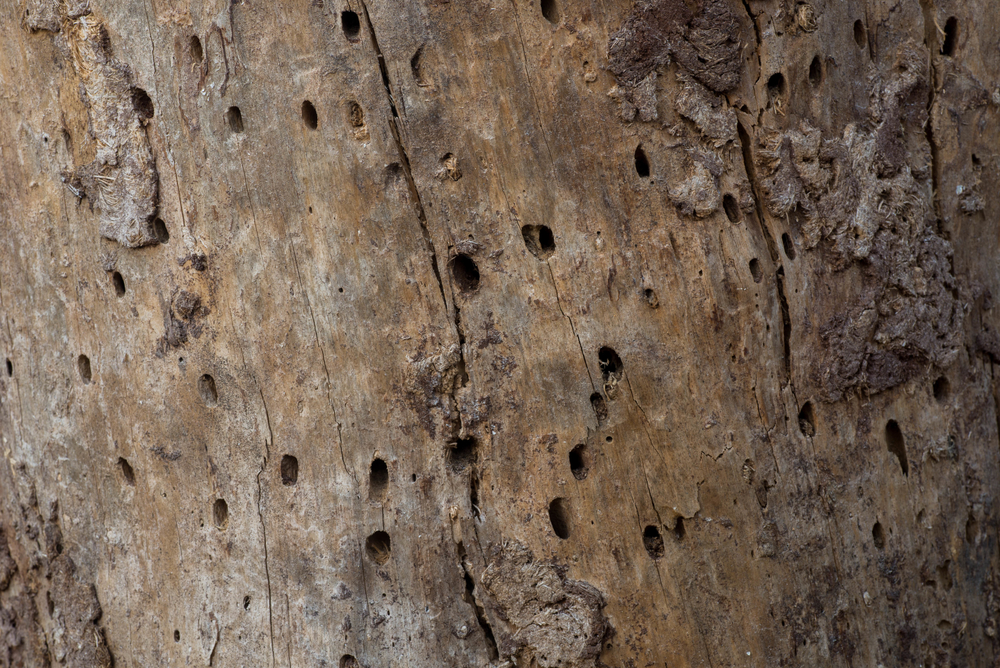
Unfortunately, if a tree is infested with bark beetles it is likely too late to save the tree and should be removed to minimize the infestation
Bark beetles are difficult to control because of where they live in trees and shrubs. They lay their eggs and pupate under the bark which protects them from insecticide applications. The best way to control bark beetles is to prevent them in the first place. If a tree or shrub is affected, you can remove the affected branches and limbs and dispose of them to stop their spread. If the bark beetles have attacked the main trunk of the tree or shrub, then it will have to be removed entirely.
The most effective way to prevent bark beetle infestations is to reduce the stress of your trees. When trees become stressed, they are more susceptible to beetle infestations because they cannot adequately protect themselves. It is important to provide the proper care for your trees to reduce their stress:
- Water: It is very important for trees to get enough water so they can produce sap that helps them fight off bark beetle infestations. Make sure you water your trees twice per month during drought periods and water them deeply so that the water penetrates at least 1 foot into the soil to reach the roots.
- Pruning: Bark beetles start out by attacking individual branches. If there is an infested limb on your tree, prune it immediately and dispose of it. You should not keep infested wood anywhere near your healthy trees, even after it has been removed. You should also avoid pruning and creating fresh wounds during the bark beetles flying season from early spring through mid-fall. If you do not feel comfortable pruning your trees, a professional arborist can provide effective tree trimming services.
The only way to control bark beetles with insecticides is to spray the trees before bark beetles land on them and bore into the wood to lay eggs. As we have previously discussed, any insecticide treatment after the beetles have gotten under the bark will be ineffective. If you want your trees to be treated with preventative insecticides, you need to call a professional arborist. These professionals will ensure that your tree has not been affected by bark beetles previously before applying the insecticide. While the preventative insecticide does help deter bark beetles, it is not a good substitute for proper tree care.
Bark Beetle Prevention, Treatment, and Control from Hendricksen Tree Care
Bark beetles were once an insect that helped the eco system by speeding up the decay of dead or dying branches and generally resisting from attacking healthy trees. The effects of global warming have caused an increase in the bark beetle population as the warmer weather allows them to live longer and reproduce faster while simultaneously creating a more stressful environment for targeted trees. While much of the destruction caused by bark beetles is occurring in forested areas, it is still important to take proper care of your trees and keep an eye out for these pests.
At Hendricksen Tree Care, our arborists can ensure that your trees get the care they need, including proper watering, fertilization, and pruning to give them the best chance to fight off or survive a bark beetle infestation. If your tree does become infested, call us right away as we may be able to prune out the affected branches before the infestation spreads to the trunk. We provide effective tree care services in Park Ridge, Northbrook, Lake Zurich, Arlington Heights, Winnetka, Lake Forest and the surrounding north and northwest Chicago suburbs.
Look for our next edition of our series on the common tree insect pests and diseases in the Chicago area.
